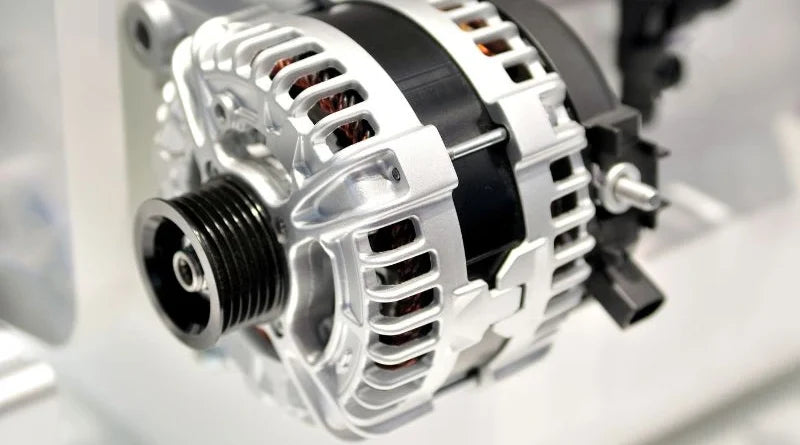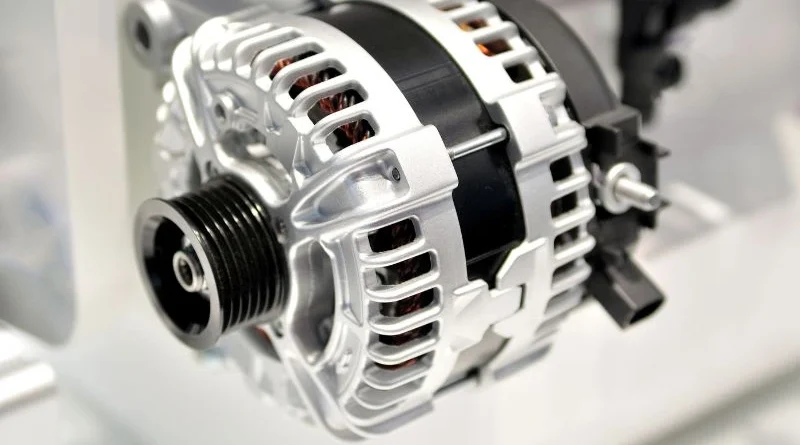
In automotive engineering, alternators play a central role in providing power to vehicles' electrical systems. Whether you're a car enthusiast, an aspiring mechanic, or just curious about how your car generates electricity, it's fascinating to learn how the alternator works. In this comprehensive guide, we look at how alternators work and highlight their essential components, functions, and the science behind how they work.
Introduction to Alternators
Before we get into how alternators work, let's first take a look at the basics of an alternator type. One type of alternator is an electrical generator that converts mechanical energy, usually from the rotation of an engine, into electrical energy. It is an important component in automobiles, as it powers several electrical systems, such as lights, air conditioning and the car's battery.
The components of a generator
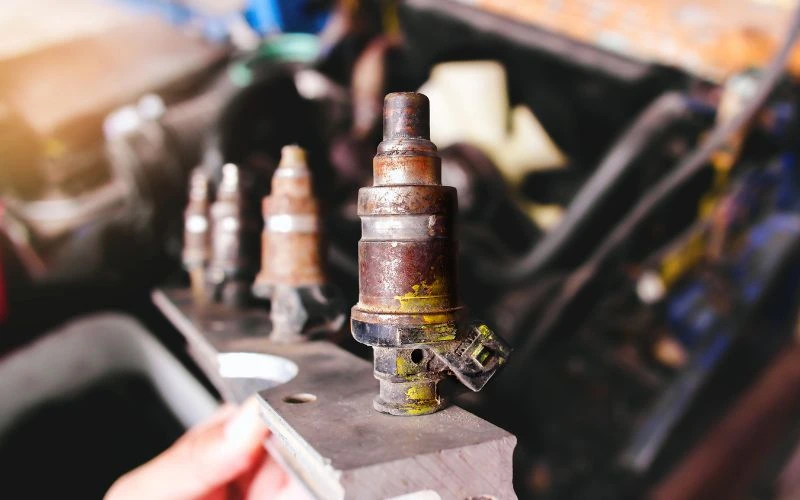
To understand the working principle of a generator, it is important to familiarize yourself with its main components:
rotor
The rotor, often called the armature, is the heart of the generator. It consists of a coil of wire wound around an iron core. The rotor is connected to the engine crankshaft and rotates at the same speed as the engine.
stator
Surrounding the rotor is the stator, a stationary component with multiple coils of wire. As the rotor spins, these coils are strategically positioned to create a magnetic field.
Voltage regulator
The voltage regulator is essential for the generator and ensures a constant voltage output. It monitors the needs of the electrical system and adjusts the generator output accordingly.
rectifier
The rectifier is responsible for converting the alternating current (AC) produced by the generator into direct current (DC). DC is the type of electricity used by the vehicle's electrical systems and battery.
The working principle of a generator
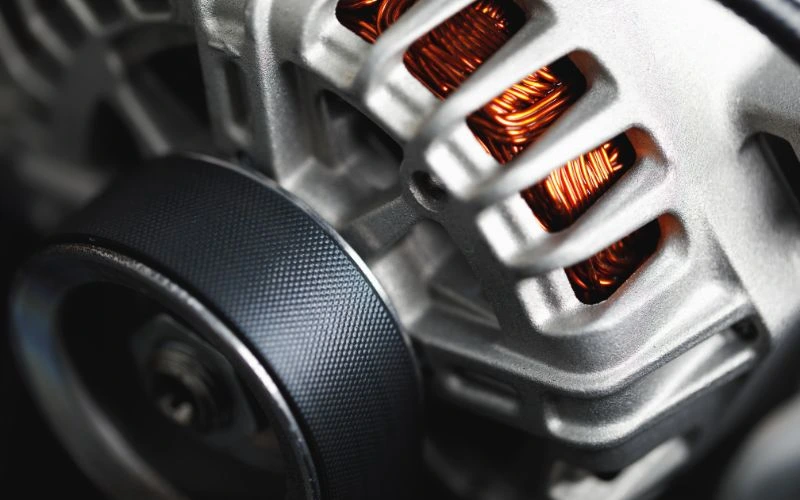
Now that we know the main components, let's see how a generator works. The operation of a generator can be summarized in a series of steps:
Step 1: Providing Mechanical Power
The process begins with the vehicle's engine. When the engine is running, it drives the generator rotor via a belt or pulley system. This supply of mechanical energy is essential for the generator to function.
Step 2: Magnetic field generation
When the rotor rotates, a rotating magnetic field is created in the stator. This magnetic field is crucial for generating electricity.
Step 3: Electromagnetic Induction
According to Faraday's law of electromagnetic induction, a changing magnetic field induces an electromotive force (EMF) in nearby conductors. In the case of the alternator, the rotating magnetic field in the stator induces an alternating current (AC) in the stator coils.
Step 4: Fix
Since most electrical systems and car batteries require direct current, the alternating current produced by the generator must be converted. This is where the rectifier comes into play. It converts alternating current to direct current using a series of diodes, allowing unidirectional current flow.
Step 5: Voltage Regulation
The voltage regulator monitors the vehicle's power requirements and adjusts the generator output accordingly. This ensures that electrical systems receive consistent power and prevents over- or under-charging the battery.
Maintenance tips for your vehicle's alternator
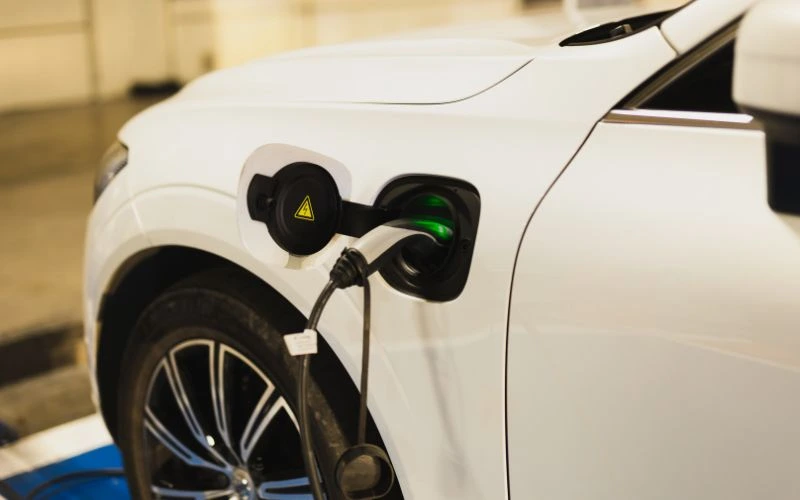
To ensure your generator continues to function optimally, consider the following maintenance tips:
Regular inspections
Include generator inspection in your vehicle's routine maintenance. Visual inspection for loose connections, damaged wiring, or worn belts can help identify potential problems early.
Checking the belt tension
The generator is usually connected to the engine via a belt. Make sure the belt is properly tensioned. A loose or damaged belt can affect generator performance.
Battery condition
The generator and battery work hand in hand. A weak or faulty battery can place undue stress on the generator, which can lead to premature failure. Check your vehicle's battery regularly and replace it if necessary.
cleaning
Keep the generator and its surroundings clean and free from dirt and contaminants. Dust and dirt can accumulate in the generator and affect its cooling and electrical conductivity.
Professional maintenance
If you suspect alternator problems or are experiencing symptoms such as dim lights or a slow engine start, contact a professional mechanic for a thorough inspection. He can diagnose the problem and recommend any necessary repairs or replacements.
Conclusion
In short, understanding how a generator works will help you understand the complex electrical systems that keep your vehicle running smoothly. From rotor rotation to the grinding process, each component ensures your car's electrical systems receive the power they need to operate efficiently. So the next time you turn the key and your vehicle comes to life, you'll appreciate the unsung hero, the generator, even more.
Common questions
1. Why is an alternator necessary in a vehicle?
A generator is essential in a vehicle, as it generates electricity to charge the battery and power various systems such as lights, radio, air conditioning, etc. Without a generator, the battery would quickly discharge, causing a breakdown.
2. What are the signs of a broken generator?
A faulty alternator can manifest itself through a number of symptoms, including dimming headlights, a warning light on the dashboard (usually in the form of a battery), difficulty starting, and strange noises coming from the engine area. If you notice any of these signs, it is important to have your generator checked and replaced if necessary.
3. Can I replace a generator myself?
Although some experienced amateur mechanics can replace an alternator, it is usually a complex task that requires knowledge of the vehicle's electrical system and mechanical components. Additionally, special tools may be required. If you are unsure of your skills or do not have the necessary tools, contact a professional mechanic to ensure a successful generator replacement.

